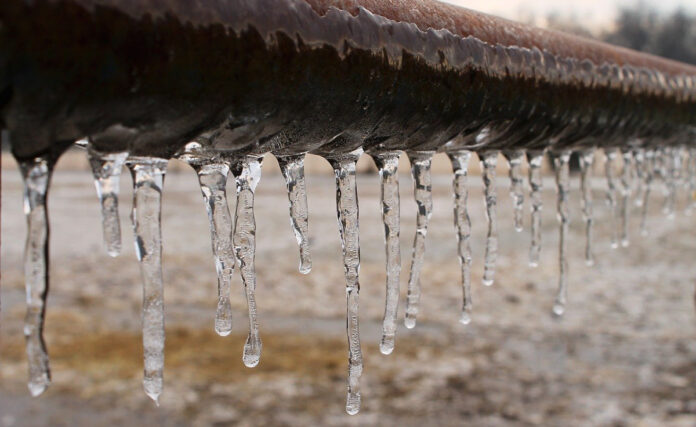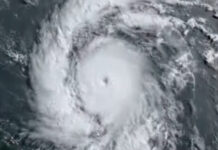Fallout from the Texas big freeze continues as the less-immediate ramifications of the cold weather and resulting power outages come to light. For example:
Almost 80 people died as a result of the storm. This count could increase as coroner’s offices determine the cause of death for people who died during the cold spell.
The Texas Tribute is reporting that this could be the most damaging disaster in Texas history, possibly exceeding the $125 billion in damage after 2017’s Hurricane Harvey.
Damage to agriculture could total more than $500 million dollars. According to the Wall Street Journal:
- Ninety-eight percent of the Valencia Orange crop and 55 percent of the grapefruit crop in Texas were destroyed by cold, plus the cold killed blossoms, resulting in the loss of next year’s crop.
- More than 1.2 million chickens or eggs waiting to hatch died because of the storm.
- Dairy farmers had to dump 14 million gallons of milk had to be dumped, and some dairy cows got frost-bitten udders and were for beef. The lost milk means less yogurt, butter, cheese and other dairy products.
- Exotic animals from retired monkeys to springbok and other African animals raised in Texas were killed as they experienced temperatures never seen in their native lands.
- Farmers also lost vegetables and other plants that were in the ground.
- The damage is already contributing to food shortages in Texas.
In a separate article, the Wall Street Journal estimated that insurance companies would spend $18 billion to repair burst pipes and address the damage that resulted in their wake. Many of these claims will be for businesses and commercial buildings. Unlike water damages from hurricanes, basic homeowners policies should cover these claims.
There are also many claims for auto damages, as everything from minor fender benders to deadly vehicles resulted from people trying to drive on icy roads.
The cost of lawsuits against utilities won’t be known for years.
Important Reminders for Preppers
The recent freeze in Texas and the catastrophic results should remind over-confident preppers that self-sufficiency is an excellent goal, but we can never fully achieve it in the long term. For example:
Gardens can get destroyed by weather events, pests, and wild animals. Weather can also damage or destroy fruit trees and berry bushes, which might normally live for years. Even if you are growing your own food, you need to have stored food and extra seeds. Have a way to recover if you are wiped out.
High tunnels and green houses are useful, but they need to be very robust to withstand extreme weather and may require a source of heat. After a TETOWAWKI event, you cannot go out and buy new plastic.
Home canning is a great way to preserve your harvest, but the jars can be broken in earthquakes and some products may freeze if you do not have a good heat source. Take precautions now.
Your livestock may also be killed in severe weather events. Chickens can get frost bitten. Young animals can freeze. Snow can make it difficult or impossible for animals to reach their food. Animals need fresh water. You should be prepared to take extra steps to save your animals from a snow storm or a drought.
Prepare for the Unexpected
It’s always the unexpected danger that causes the most damage. The power generators in Texas were prepared for hurricane and extreme heat, but not bitter cold. Look at what you are prepared for and see if you could survive the opposite.
Renewable energy like wind and solar are excellent for off-grid uses, but they are not infallible. You should get the largest battery pack you can afford and have a generator to recharge them when your renewables get knocked off line. Have a back-up plan.
As we have mentioned before, you need to have an alternate heat source.
Have tools and spare parts so you can make your own repairs.
Use the Layered Approach to Prepper
You can read all about the layered approach to prepping in our About Us page, but briefly: The layered approach relies on having multiple ways to accomplish something, which automatically provides redundancy and a fall-back plan. The layered approach to prepping gives you options rather than a single solution.
For example, we store rice and beans, among many other things, to help feed us during a massive SHTF disruption. This includes the bag of rice in our kitchen pantry and wet-packed beans in cans from the grocery store. We also have rice and five or six kinds of beans in #10 cans. And we have rice and at least two varieties of beans in 5-gallon pails. So if bugs infest a bucket or some rodent eats through a plastic pail, we do not lose it all as we’ll still have the product in #10 cans. We also have wheat, corn, and quinoa stored.
You need food storage, but that is not all you need. The layered approach would tell you that you also need a garden to raise your own food, livestock you can eat, game you can hunt, and you should know how to forage for wild foods.
Redundancy is more than having a spare. Don’t just have three or four flashlights, have three or four different ways to create light. If it is pitch black, that tiny LED on your key ring is going to seem super bright.
TEOTWAWKI is Going to Suck
Events like the recent damage to Texas and the COVID crisis are just a reminder that whether we have a slow collapse or life as we know it changes over a few short days, there’s no doubt that the result is going to suck. You need to be mentally strong enough to persevere and live through or despite the suckiness.
For most of the people in Texas, life is going to get back to normal pretty quickly, but in a global disaster, that will not happen. You need to be prepared to survive a Texas calamity in which the utilities never go back on, no one is giving out water, the free meals disappear, gas stations are not resupplied, and grocery stores stay empty.
Since moving here, I have been told by an elder resident that there was a forest fire in this area back in the 1960s. Another fellow told me that there was a blizzard in the 80s that resulted in five feet of snow in the mountains. Some people reportedly were snowed in for a month.
I don’t know if these stories have grown with the telling, but they tell me that I not only have to be prepared for forest fires and blizzards, but I have to be prepared for forest fires and blizzards during a SHTF event.
See our lessons learned article for more information on how you can be prepared to protect yourself from a situation like Texas just experienced.








